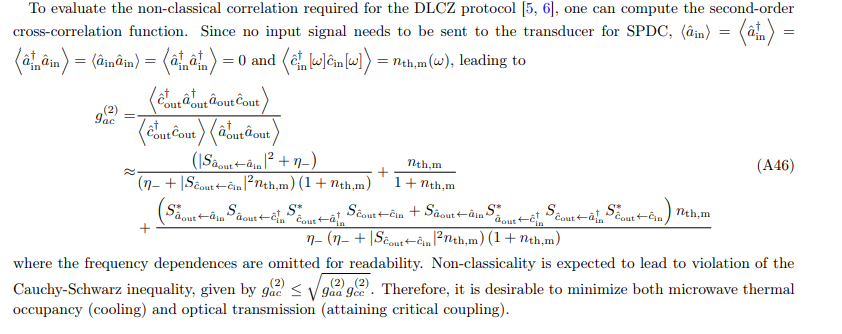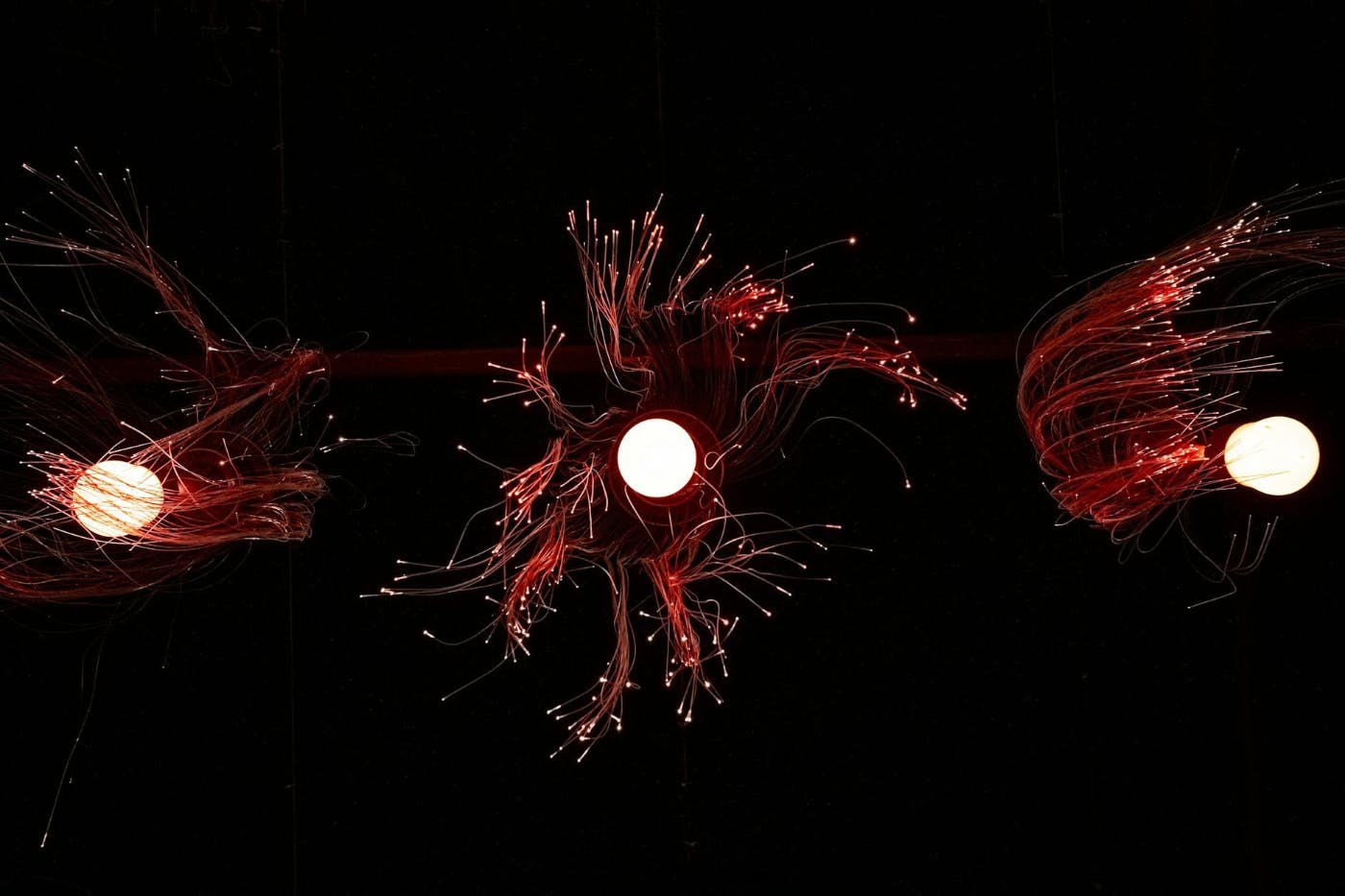This paper is available on arxiv under CC 4.0 license.
Authors:
(1) Terence Blésin, Institute of Physics, Swiss Federal Institute of Technology Lausanne (EPFL) & Center of Quantum Science and Engineering (EPFL);
(2) Wil Kao, Institute of Physics, Swiss Federal Institute of Technology Lausanne (EPFL) & Center of Quantum Science and Engineering (EPFL);
(3) Anat Siddharth, Institute of Physics, Swiss Federal Institute of Technology Lausanne (EPFL) & Center of Quantum Science and Engineering (EPFL);
(4) Alaina Attanasio, OxideMEMS lab, Purdue University;
(5) Hao Tian, OxideMEMS lab, Purdue University;
(6) Sunil A. Bhave, OxideMEMS lab, Purdue University;
(7) Tobias J. Kippenberg, Institute of Physics, Swiss Federal Institute of Technology Lausanne (EPFL) & Center of Quantum Science and Engineering (EPFL).
Table of Links
-
Results
Appendix A: Theory
1. Coupled mode theory for optical modes hybridization
Using a pair of optical resonances increases the intracavity photon number for a given input optical power, resulting in an enhanced optomechanical interaction. Such an optical doublet is implemented here by evanescently coupling two micro-rings, forming a photonic molecule. Consider two bare optical modes with resonance frequencies ωl and ωr that correspond to the left and right micro-rings, respectively. The two modes couple with a rate J, which yields the Hamiltonian [1]

and the equations of motion

With Laplace transform, they can be rewritten in frequency domain as

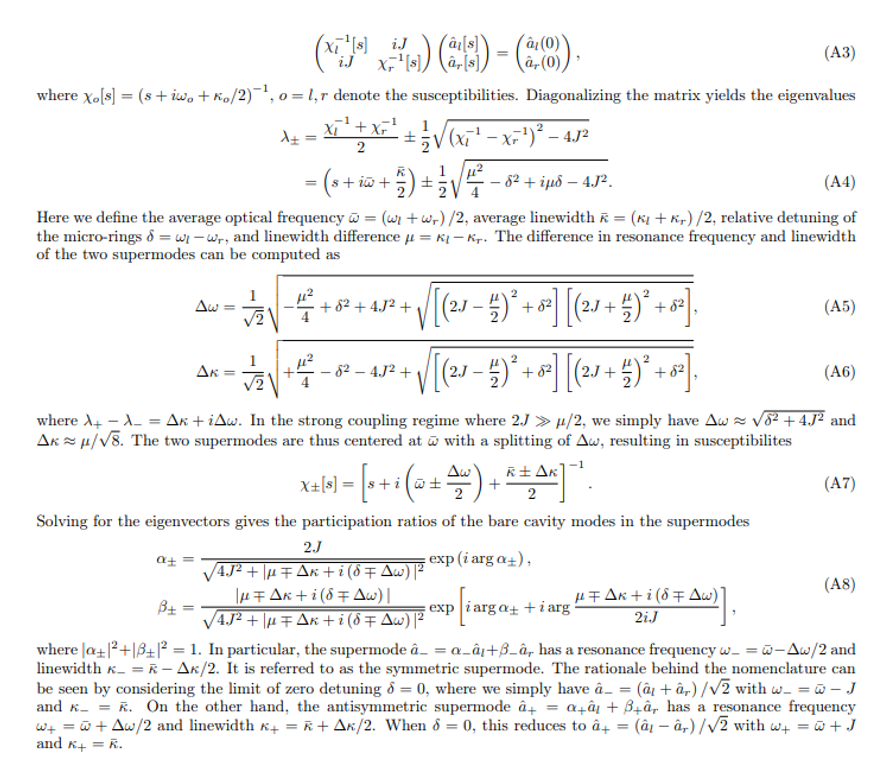
2. Transducer Hamiltonian and input-output relations
In terms of bare micro-ring modes, the transducer Hamiltonian is given by

Note that the piezo-coupled acoustic mode interacts with only one of the micro-rings. To compute quantities directly related to the experiments, we rewrite the Hamiltonian in terms of the supermodes (Appendix A 1) as
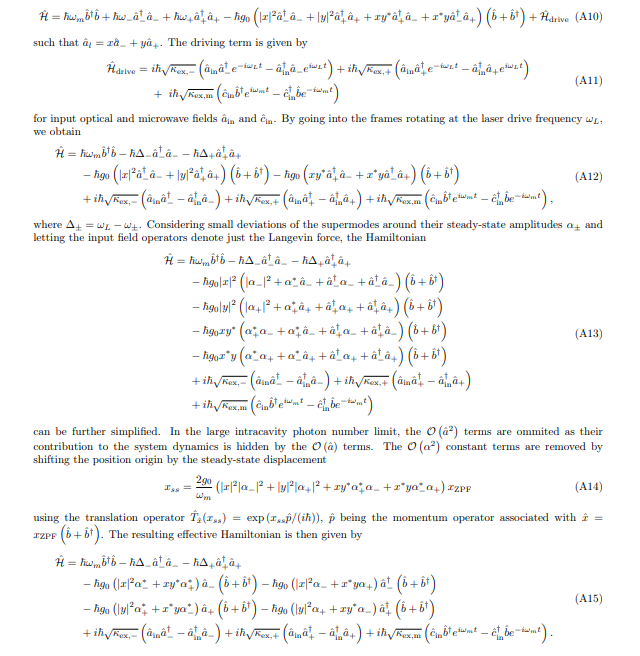
Finally, by defining effective optomechanical coupling rates

and going into a rotating frame defined by the operator

we have

in the interaction picture. The time evolution of the bosonic modes can be computed using the Heisenberg-Langevin equations given by

We can move to the frequency domain by using the Fourier transform

along with the properties

We then have


3. Conversion efficiency and added noise
For the following analysis, we consider the triply resonant configuration where ω+ −ω− = ωm and the optical pump is on resonance with one of the optical supermodes. First, we consider the anti-Stokes configuration where ∆− = 0 and ∆+ = −ωm. From Eq. A24, we have the input-output relation

The equations of motion is given by

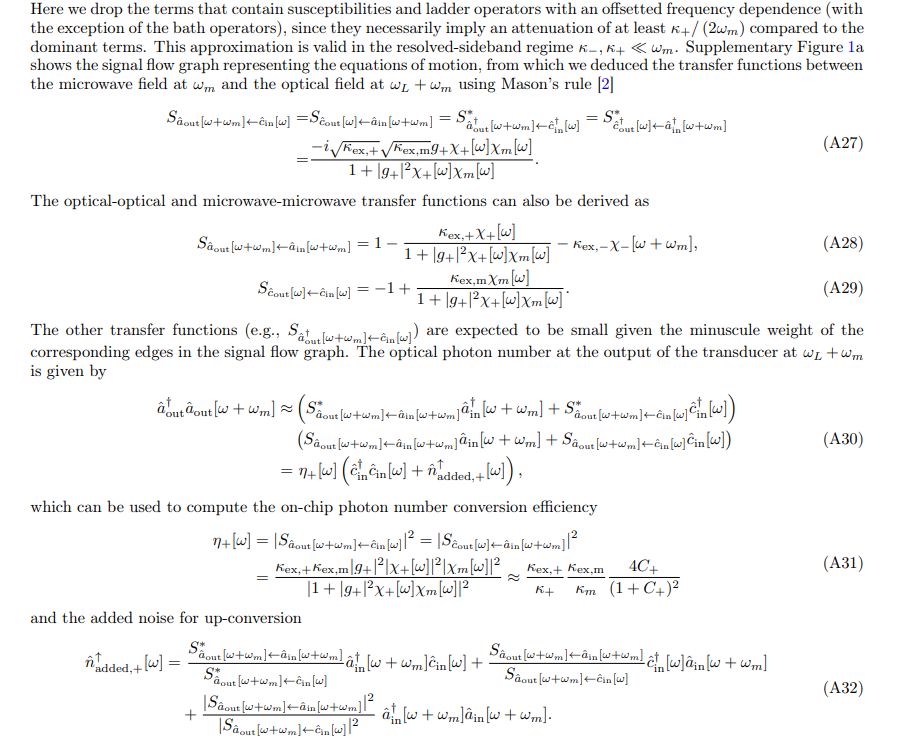
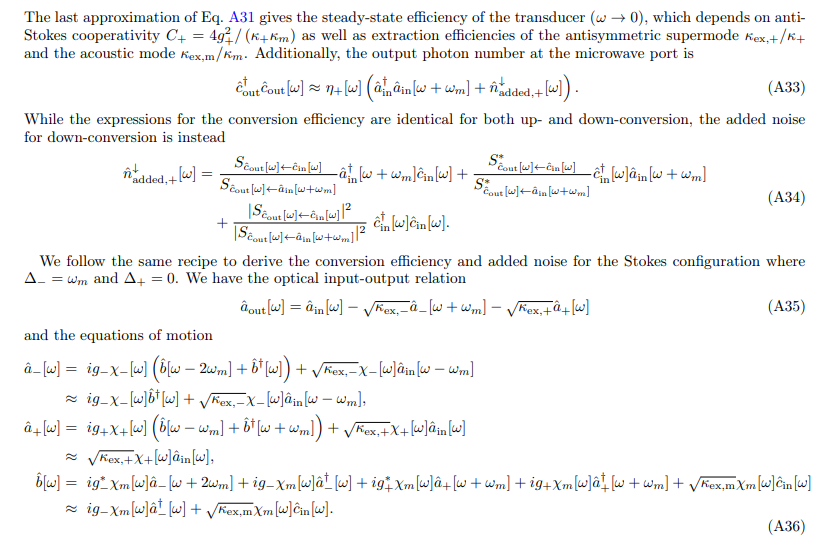
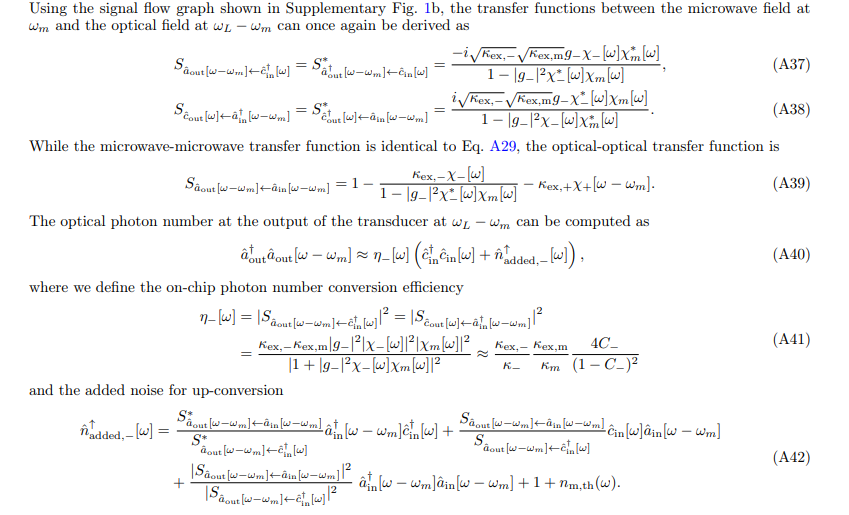
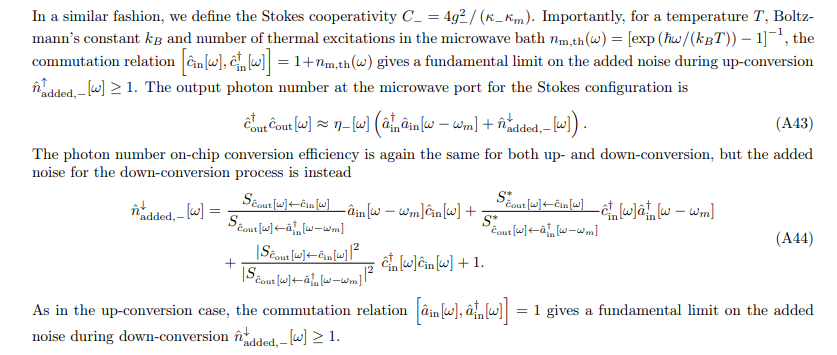
4. Estimation of correlated microwave-optical pair generation rates
Equations A40 and A43 suggest that entangled pairs of microwave and optical photons can be generated in the Stokes configuration since it gives rise to an effective two-mode squeezing Hamiltonian [3–5]. In order to verify that the HBAR transducer can generate entangled pairs of microwave and optical photons, we compute the on-chip pair generation rate, expected to be equal to the output photon flux from the lower frequency optical mode as in standard spontaneous parametric down-conversion (SPDC) scheme. Integrating over the transduction bandwidth, we have

In practice, the pump laser should be filtered for the optical output to be dominated by heralding photons, and other losses from the measurement setup can further reduce the effective rate. For η oc = 7.9×10−5 , κ− = 2π×300 MHz and κm = 2π × 10 MHz, this would corresponds to an on-chip pair generation rate of 190 Hz. Losses in the measurement chain will have to be accounted for to estimate the count rate at the detector. In order to measure entanglement between the microwave and optical fields, the on-chip rate must be higher than the thermal decoherence rate of the acoustic mode κmnth,m(ωm), where the thermal occupancy nth,m(ωm) is given by the Bose-Einstein distribution. For ωm = 2π×3.5 GHz and κm = 2π×10 MHz, the decoherence rate at 800 mK is 43 MHz and 0.5 Hz at 10 mK. Therefore, the transducer needs to be operated in the mixing chamber of the dilution refrigerator, with a pulsed pump to reduce heat load. The total rate of optical heralding is hence gated by the pump duty cycle.
